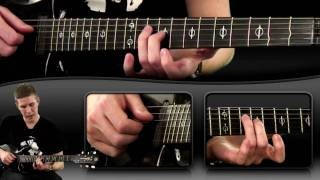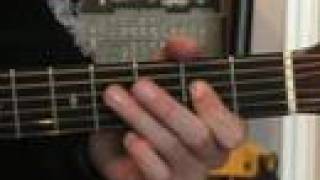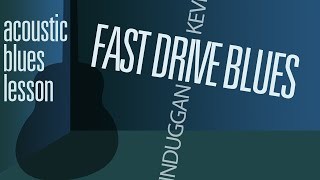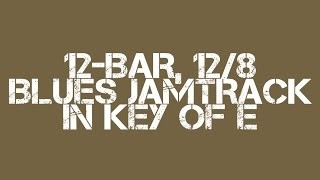How to Start Improvising Blues
Published on 26 January 2016
For more information from the source site of this video please visit: http://secretguitarteacher.com/youtube/intermediate/blues/x502dkU7XG0/83602770-how-to-start-improvising-blues.php
How to start improvising Blues guitar - Do it by doodling
This is a short but very important lesson.
One of the most difficult steps for guitar players learning to improvise is making the transition from scales pattern to lick formation.
Later on this course I'll show you a few sample licks you can learn and in fact, copying other people's licks is a time-honoured method of making this transition.
However, if that is all you rely on, you will make slow progress and also, because your licks are all er... borrowed, you will not have the satisfaction of feeling that your playing is original.
Over the years, I have developed a simple method to help people bridge the gap between knowing their scale patterns and being able to spontaneously form their own blues licks. I call this method doodling..
Have you ever hung up after a long telephone conversion and then noticed that an extraordinary work of art seems to have materialised on your message pad?
That's what I mean by doodling -- freewheeling spontaneous, almost mindless creativity!
How do you apply this to guitar playing?
First play through the scale pattern you have decided to work with. Let's choose the first position in E to demonstrate (see video)
Get well warmed up and make sure you are absolutely sure of the scale pattern.
Then set yourself a time limit -- I suggest 10 minutes and start doodling.
Just pick a note or two from the scale and play around with them.
Keep things real simple to start with and just mess around with different rhythms. (see video)
Use lots of repetition
Really get into the rhythm
Then gradually allow yourself to branch out -- add a couple more notes
Explore different areas of the pattern
Work in some technique; the odd bend, bit of a slide here, a hammer-on there
For a minute or two just relax and let your fingers play around with as little conscious input as possible -- exactly like doodling on the phone message pad.
The only rule is DON'T STOP! Keep going for whatever time you have set yourself.
No need for evaluation of artistic or musical relevance -- just mess around.
Once you have done a good ten minute session of doodling then play a blues backing track (available free at http://www.secretguitarteacher.com and continue to apply the same mindless doodling approach, but this time, listen to how your doodles sound against the chord changes and the rhythm of the backing and make little adjustments to improve the fit.
During the early stages of developing improvising skills I strongly recommend playing hours of this sort of thing -- it should be stressed that there is no attempt yet to produce a finished solo.
We are just developing ideas and improving the ability to run around the patterns with ever increasing familiarity.
Then after a few hours of this approach you begin to hone your listening skills and trim down your phrases to select just the notes that need to be there and leave out all the padding -- economise!
So to summarise: This approach has three phases:
1. Mindless doodling without any backing to develop speed, fluency and integration of technique.
2. Doodling to backing tracks to develop ideas that work musically.
3. Refinement by careful listening and the exercise of artistic judgment to produce a well-balanced solo.
Meanwhile -- after a few doodling sessions It's a good idea to start stealing licks as well -- just to help feed ideas into your own creative pool.
You can start that process in the next lesson by stealing some of mine!!
See you there!
 Easy Blues Lick Guitar Lesson
Easy Blues Lick Guitar Lesson
 Blues Lead Guitar Solo Lesson, In the Key of B (Pa...
Blues Lead Guitar Solo Lesson, In the Key of B (Pa...
 Electric Blues Turnaround Lick
Electric Blues Turnaround Lick
 Improvising with the Natural Minor Scale
Improvising with the Natural Minor Scale
 Easy Acoustic Solo Blues Lesson: Slow Playalong #3...
Easy Acoustic Solo Blues Lesson: Slow Playalong #3...
 The Blues Scale (Minor Pentatonic) and the Major P...
The Blues Scale (Minor Pentatonic) and the Major P...
 Acoustic Blues Guitar Lesson: FastDrive by Kevin D...
Acoustic Blues Guitar Lesson: FastDrive by Kevin D...
 Slow Eric Clapton Blues Lick Guitar Lesson
Slow Eric Clapton Blues Lick Guitar Lesson
 Jazz Blues Lick - Guitar Lesson by Robert Renman F...
Jazz Blues Lick - Guitar Lesson by Robert Renman F...
 12 Bar 12/8 Blues Jamtrack in Key of E - with chor...
12 Bar 12/8 Blues Jamtrack in Key of E - with chor...







